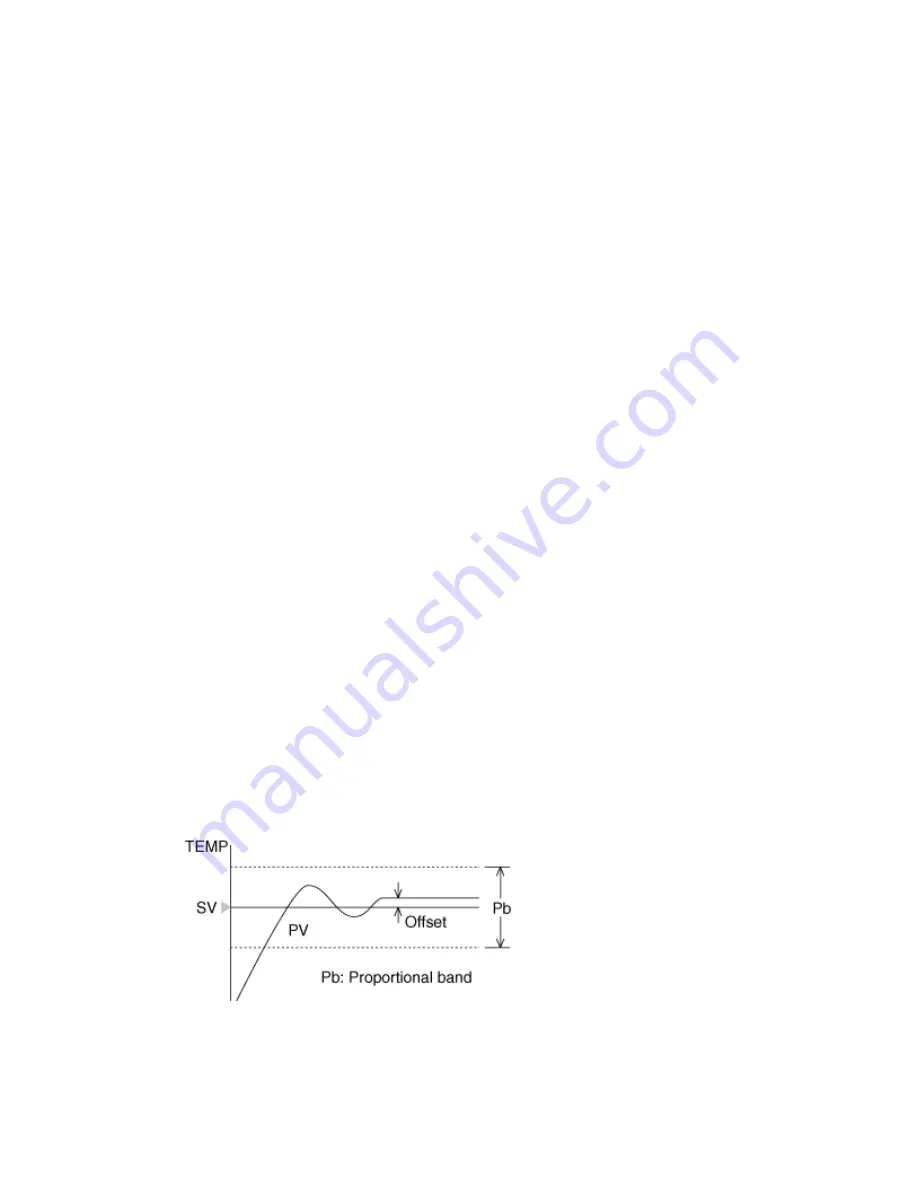
Heat Manager Pro User Manual V1.5 Page 67
B.2.2. Proportional action
P stands for proportional action and is a multiplication factor of the deviation between actual set
value and process value. Proportional action control is also referred to as P or gain in some
control systems.
With the proportional action, the controlled process no longer switches as a direct result of the
deviation between set value and process value but controls this
proportional
to this deviation.
The proportional action control is active within a user-definable zone around the set value,
called the proportional band (Pb). When the process value (PV) enters the proportional band,
the output
becomes gradually smaller and the process value stabilizes somewhere within the proportional
band.
In the Heat Manager you set the proportional band in
degrees
, but beware that there are other
brands of systems that set this value in a percentage of the measurement span.
Proper adjustment of the proportional band will result in smooth control. However, it is very
seldom, that the actual process value stabilizes exactly on the set value, and it usually becomes
stable with some deviation from the set value, called offset.
A high P value gives the control system a large band of modulation, the major disadvantage is
that the reaction to the deviation can be quite slow.
A too low P value, however gives an oscillating system where the process value continuously
over-
and undershoots the set value. We call that “hunting”, the controller hunts to reach the set
value
Visualize this by thinking of the gas pedal in a car (with automatic transmission): a high P value
is a gas pedal where you can push it very far in so you can control in an accurate way, but need
to push it far in and out to reach the speed that you want.
A low P value however is a gas pedal that has a very small travel, but controls the speed of the
motor from idle to maximum rev with only a small push on the pedal. It is clear that this situation
makes it also difficult to reach the speed you want: you over- and undershoot the speed all the
time: more like a classic on/off control.
The “trick” is to reach the correct value where the oscillation is very low, but with a quick enough
responsiveness to deviations. Large slow systems that react slowly to deviations generally need
a higher P action than small quick systems.
Note:
Setting the P action to 0 will result in on/off control action. This will result in relatively
large over- and undershoots.
















































